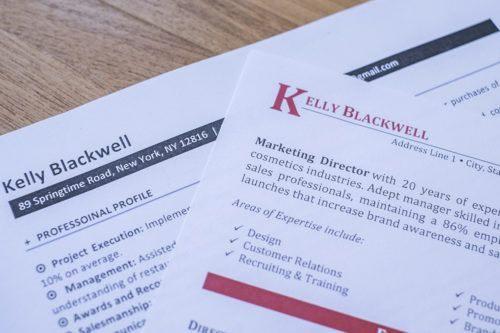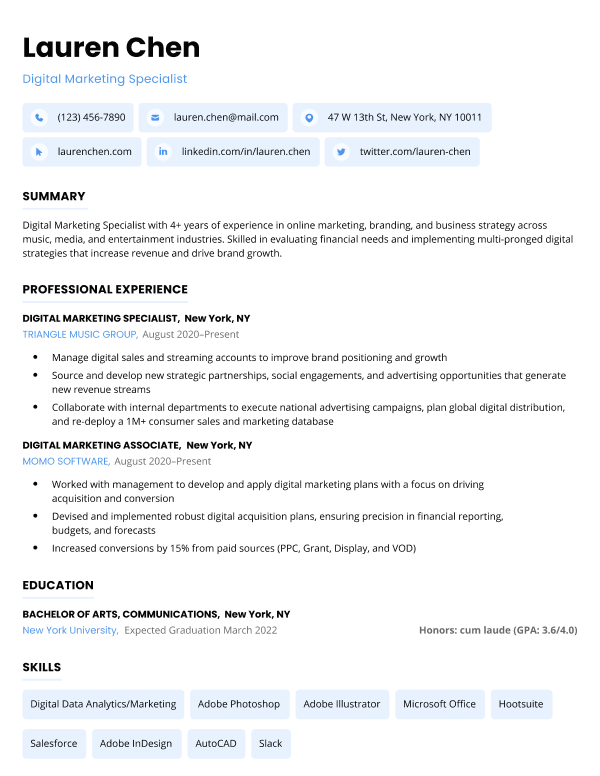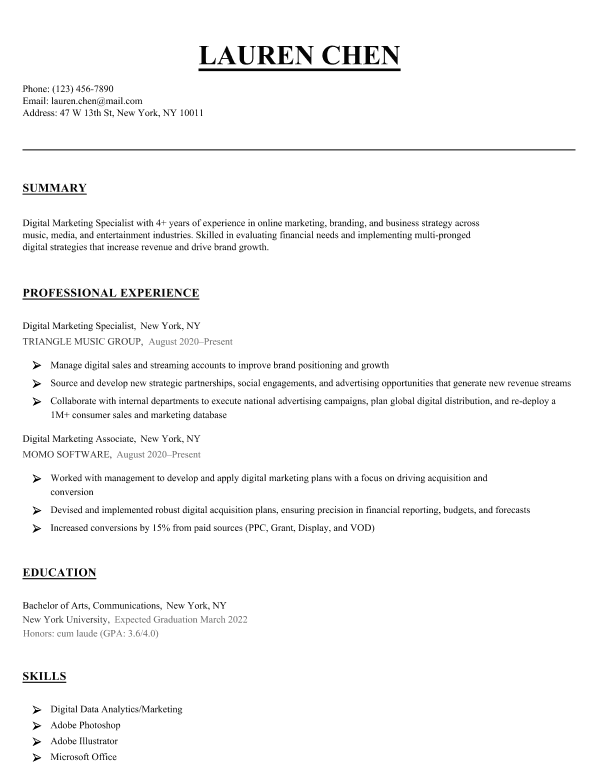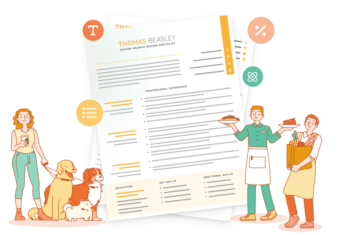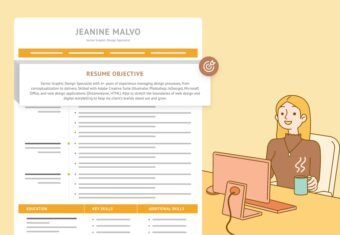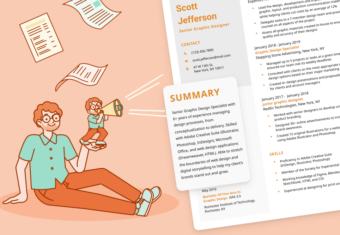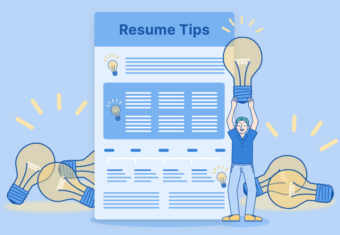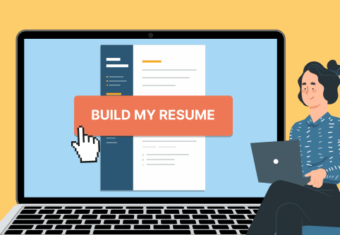Your header is the very first thing a hiring manager sees when they review your resume. So when you write your resume, it’s important to pay attention to how you format your header.
If you aren’t sure where to begin, don’t worry. Below, we feature examples of various resume header styles, and explain what information needs to be included in your header.
Our free-to-use resume builder can make you a resume in as little as 5 minutes. Just pick the template you want, and our software will format everything for you.
Resume heading examples
Before designing your resume, think about the level of formality required for the job you want.
Is the job you’re applying for professional or casual? Does your resume design need to be creative or traditional?
After you’ve decided what level of formality is appropriate, you have three basic types of headers to choose from:
Professional header
The most formal type of resume header (and also the most common) is the standard left-aligned horizontal header.
Here’s an example of a professional resume header:
A horizontal header is a safe choice that suits any level of formality. It’s basic, readable, and highlights your name.
Don’t title your resume “[Your Name]’s resume”. Resume headers only require you to include your name, as well as your contact details.
Creative header
Creative resume headers often include eye-catching design elements like icons, brighter colors, and distinctive fonts or typography.
While less traditionally formal, these headers attempt to grab attention and reflect the skills required in more creative fields. However, the level of creativity should match the norms of the specific industry.
Here’s an example of a creative resume header with bright colors, icons, and an accent font:

Vertical header
Most resume templates have a horizontal header. Some layouts, however, place the header in a vertical bar on the left side of the resume.
Here’s an example:
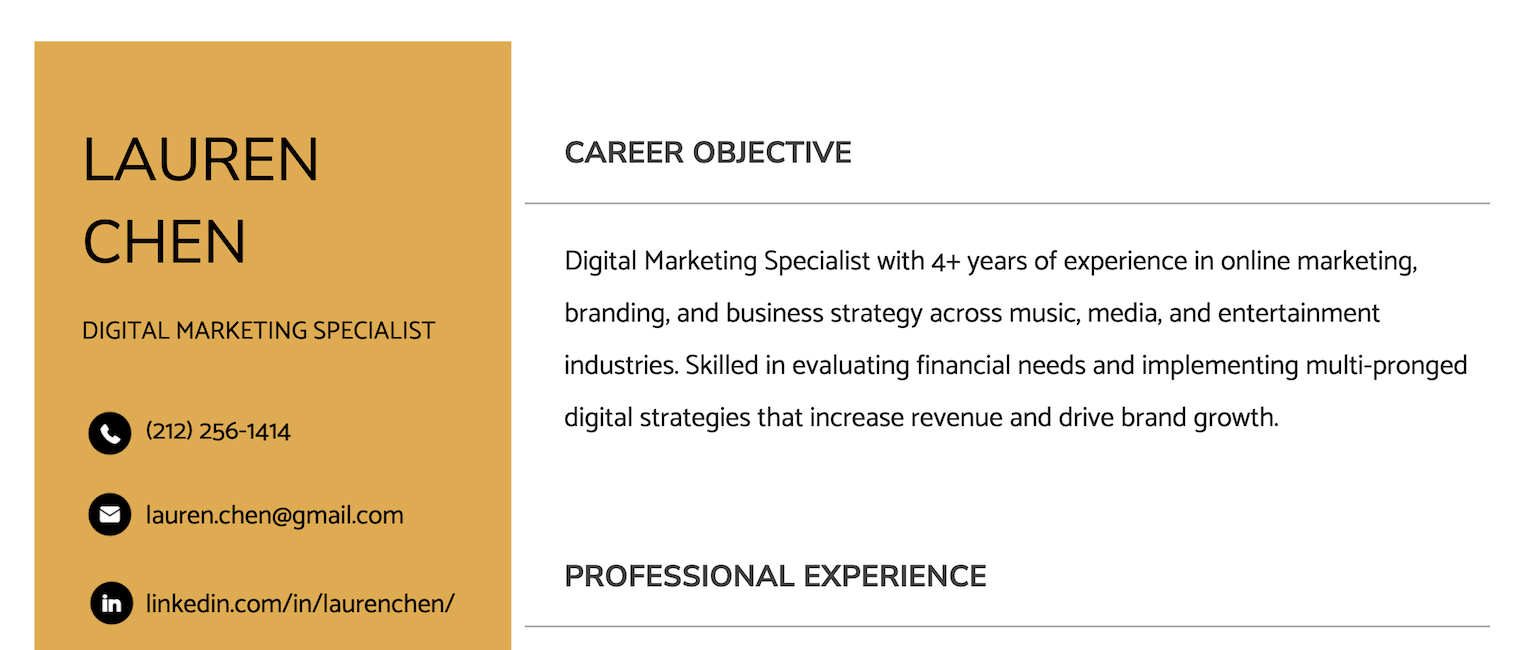
A vertical resume heading is a great way to make your resume stand out and add modern flair to your application.
However, keep in mind that a vertical resume header is less traditional. If you’re applying for work in a formal industry (law, medicine, etc.), use a horizontal header instead.
What to include in your resume header
Your header needs to be concise enough that it doesn’t take up unnecessary space, but must still contain all of the information hiring managers need to know about you.
Your resume header should generally include the following:
- First and last name
- Current job title
- Phone number
First and last name
Your name should be the most prominent text on your resume because it’s the first thing recruiters and hiring managers will look for when pulling up your job application.
Using larger, bold text for your name draws the reader’s eye and makes it easily scannable.
Here’s an example:
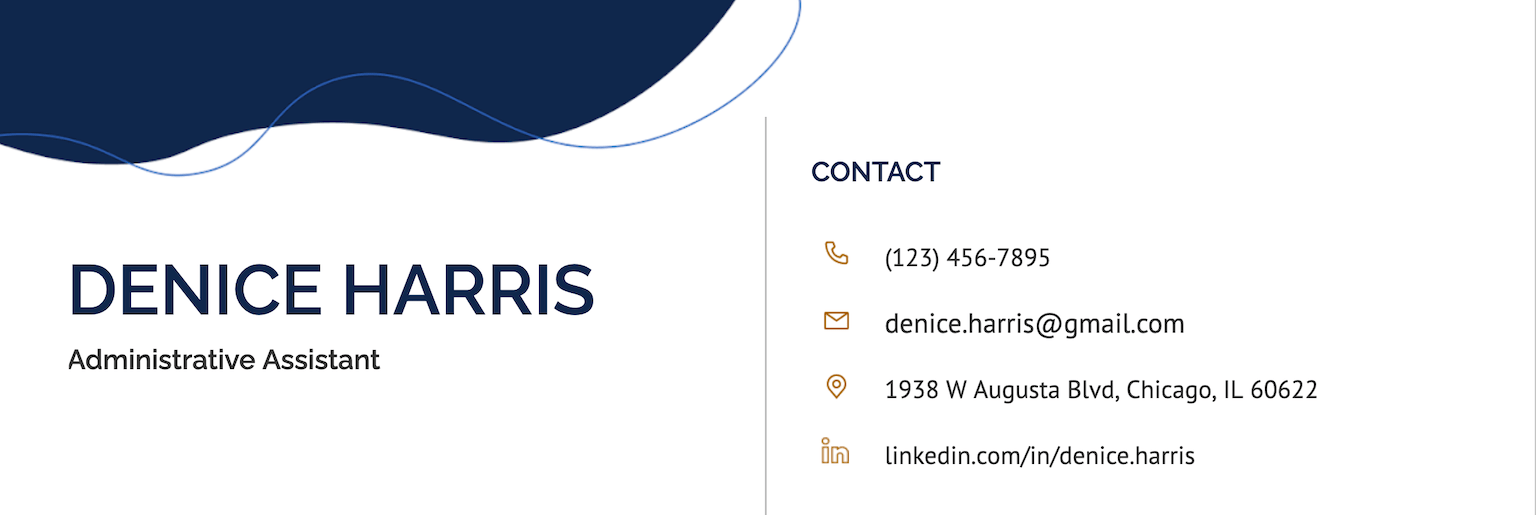
Job title
In a smaller font, add your current job title under your name so that hiring managers can quickly see that you’re a match for the role.
If your current title is interchangeable with the title of the role you’re applying for (ex. Creative Director and Art Director), consider using the title mentioned in the job description.
If you’re switching careers, it might be better to leave your title off of your resume to avoid drawing attention to your lack of experience.
Additionally, don’t forget to note any relevant certifications or licenses you hold in your header. If you’re a Certified Nursing Assistant, put “Patient Care Assistant, CNA” or “Home Hospice Caregiver, CNA” as your title.
Address
Next, add your mailing address, or just the city and state if you don’t want to include your full address.
If you live far away, you can add “open to relocation” to let the hiring manager know that you’re willing to move if needed, or just don’t put your address on your resume.
Email address
Are you submitting your resume online? Include a clickable email address to provide a quick way for hiring personnel to contact you.
Make sure you are using a professional email address. If necessary, use a free email service such as Gmail and create a professional email address for the job search.
Phone number
Next, list your cell phone or home number. Hiring managers often prefer to contact candidates by phone to set up interviews, so include your most commonly used phone number.
Optional details to add to your resume header to make it stand out
While the main purpose of a resume header is to convey basic information about yourself, it’s also an opportunity to add other relevant information to help your application stand out, such as:
LinkedIn profile
LinkedIn is the ultimate online platform for the business world. Many hiring managers use LinkedIn to hire or vet new personnel.
Adding your LinkedIn URL to your resume is a great way to make your resume stand out.
When you first join LinkedIn, your URL will contain a string of random numbers and letters, so you’ll want to remove these before adding it to your resume. To personalize your profile URL, click “Public profile & URL” in the upper right-hand corner of your profile page.
Before sending out your LinkedIn URL to prospective employers, update your page with a well-written LinkedIn summary.
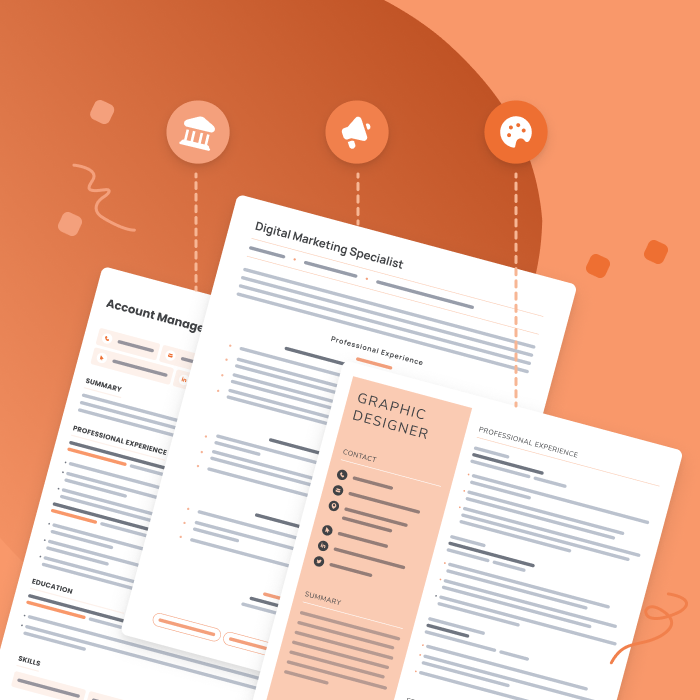
Resume examples for different industries
Not sure what your resume should look like? The best way to learn is by taking inspiration from resume examples written by other candidates in your industry.
Personal website
If you’re in a creative field like web design, photography, interior design, or writing, a professional online portfolio is a valuable way to highlight your work.
If you want to include a link to your personal website, your resume header is the best place to put it.
X (formerly Twitter) handle
Only include your Twitter handle if you use it for business purposes.
For journalists, writers, designers, and other creative job seekers, your Twitter account can show potential managers how much you care about the industry you work in.
Click to rate this article
4.9 Average rating


